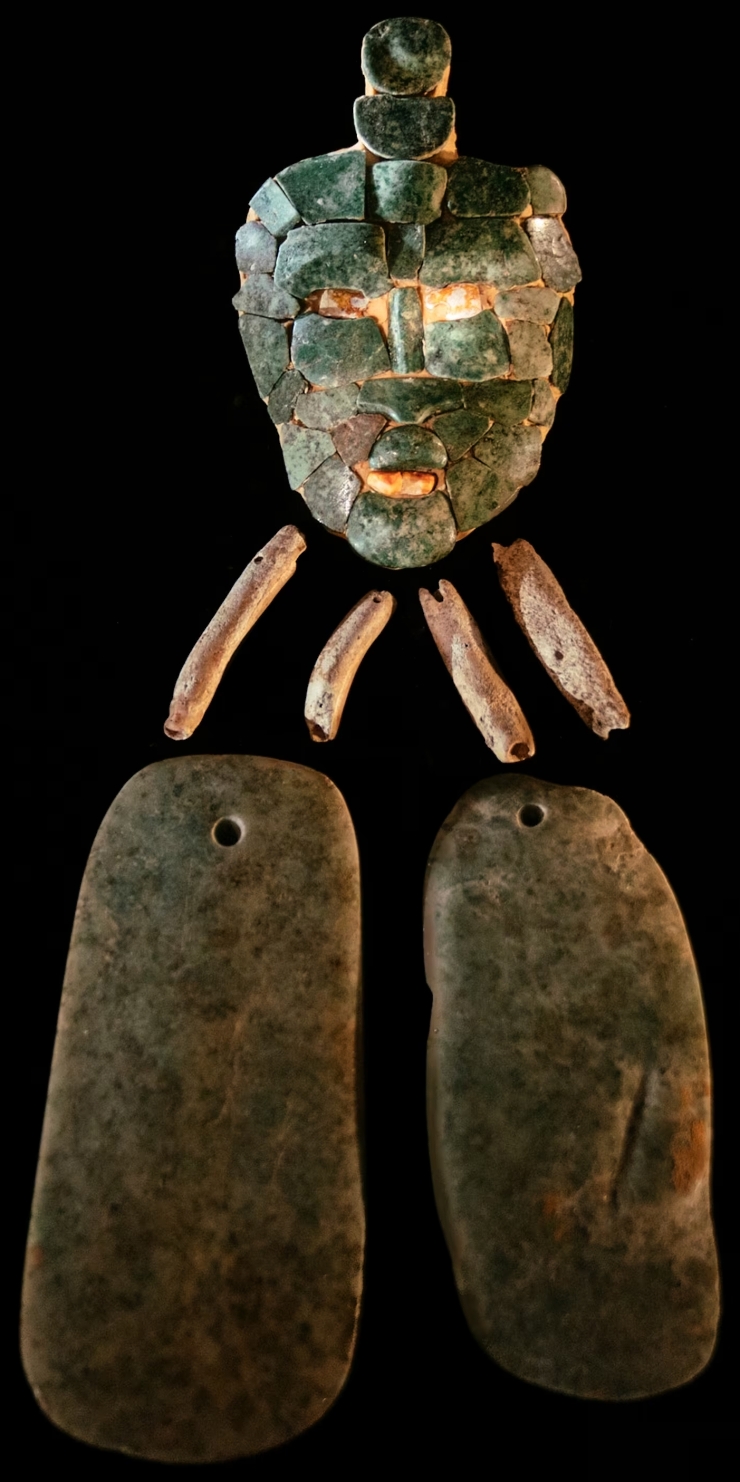Pěknej článek 
In a 1,700-year-old Mayan royal tomb, a jade mask of the god
Categories: Nálezy nejenom s detektorem kovů v USA, severní a jižní Americe
Archaeologists from National Geographic have discovered a beautiful royal jade mask from the mid-4th century at Chochkitam near Petén, Guatemala. It survived looting by looters and was stored in the pyramid's burial chamber. Experts have deciphered the inscriptions and identified its owner and the god it represents.
Chochkitam lies in the middle of the rainforest, perhaps that's why it hasn't been thoroughly explored archaeologically for a long time. Although the archaeological site has been known since the early 20th century, its connection to the Mayan civilization has eluded experts. On the contrary, looters have long been "active" here, digging tunnels into burial mounds in order to loot valuables and sell them on the black market. In 2021, with the help of LIDAR, a hidden burial chamber was discovered in the middle of the excavated pyramid and preserved beyond the reach of the robbers.
To prevent further looting, the researchers had to dig over 7 meters into the bowels of the pyramid before coming across skeletal remains and a coffin-shaped stone box. The box contained offerings such as a ceramic pot, large oyster shells, bone fragments and jade parts from a mosaic mask. In addition, archaeologists found two large jade plaques, 13 spiny dogfish shells and a stingray spine, which referred to the virility and strength of the ruler. The findings and the pyramid itself point to a royal burial.
The objects were taken to an archaeological laboratory in Antigua, where National Geographic's head of excavations, archaeologist Francisco Estrada-Belli, re-examined them in June 2022. In doing so, he noticed that some of the bones, which archaeologists believed belonged to the crypt's occupants, were covered with fine engravings. The carvings, made with an obsidian knife, depicted a ruler raising the head of a Mayan god.
Mayan epigraphy specialist Alexandre Tokovinine of the University of Alabama helped decode the glyphs and unlock the mystery of the ruler's identity and that of the deity. He discovered that it was King Itzam Kokai Bahlam ("sun/bird/jaguar god"). The swirling deity is known to archaeologists as Yax Wayaab Chahk G1 - he depicts the Mayan storm god, "the first sorcerer god of rain".
Radiocarbon dating of the bones in the burial chamber has determined their age to be around 350 AD - the early part of the Classic Maya period. Itzam Kokaj Bahlam was probably the ruler of the city, but depictions of the royal family elsewhereHe was depicted as a vassal king who served much more powerful dynastic rulers in Tikal and Teotihuacán. In comparison, Chochkitam was a small and remote city with very limited power and reach.
"The find is very, very unusual," Estrada-Belli said, adding that it is extremely informative about a time and place that is still very mysterious and obscure to experts. "Everything tells me it was a Mayan king who was part of the Mayan royal family network. We found no statement of vassalage at the site, but if you read between the lines, it meansthat they were vassals, probably directly to Tikal and indirectly to Teotihuacán," the Boston University archaeologist concluded.
Roman Nemec
Sources: thehistoryblog.com, nationalgeographic.com

Jade mask in a folded shape with eyes and mouth made of shells

folded mask with bones and large jade plaques

jade mosaic mask

burial chamber inside the pyramid

engravings and carvings on human bones
The article is included in categories:



